
Burnley Manchester Road Station Gallery 2: 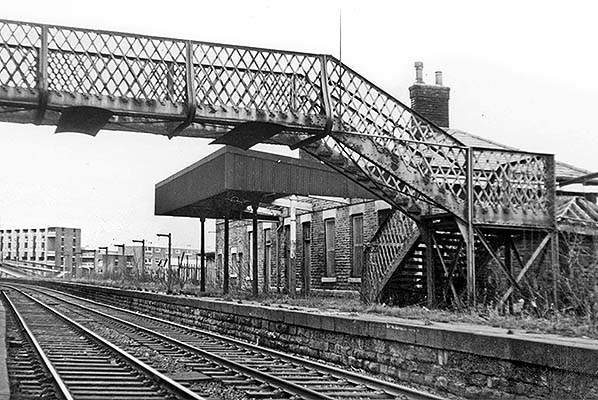 The up platform of Burnley Manchester Road station, looking north-west in February 1971, almost a decade after it closed to passengers. The open footbridge in the foreground replaced a covered one at an unknown date. The platform in front of the main station building on the right is covered by an awning installed in 1950 which replaced a longer example of traditional design; some of its roofing has disappeared. The standards which formerly carried gas lamps still line the platform beyond the building. They are of a brutalist concrete design beloved of the LMS which was found at stations scattered across the company’s routes. The Trafalgar Street flats in the distance are equally
displeasing to the eye. Photo by John Mann 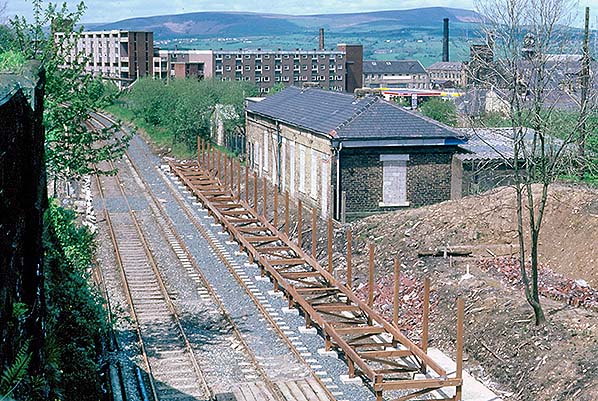
Although the platforms of the 1866 station were removed in the 1970s the main building at Burnley Manchester Road station survived in industrial use, its windows filled with breeze-blocks. In 1984 passenger trains were restored to the Copy Pit route, and the decision was soon made to reopen Manchester Road station. On 26 May 1986, in this north-westward view from Manchester Road bridge, the up platform can be seen under construction. The old building would remain in place for many years but no longer had any railway function. Trafalgar Street flats are in the background.
Photo
by Alan Young
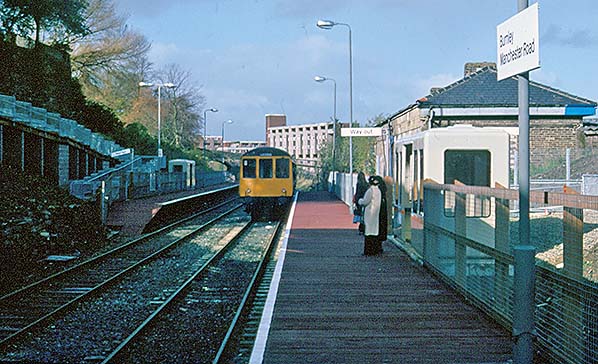
Burnley Manchester Road station reopened, unstaffed, in September 1986, and a DMU is seen here at the up platform a month later, on 30 October. The old station building is seen on the right, fenced off from the platform as it no longer has a railway function. Small waiting shelters are provided on each of the partially-staggered platforms. Typical 1980s-style lighting on tall posts is installed and signage is of the BR ‘Corporate Identity’ type. It will be seen that the down platform, being in a cutting, is approached by a lengthy ramp.
Photo by Alan Young 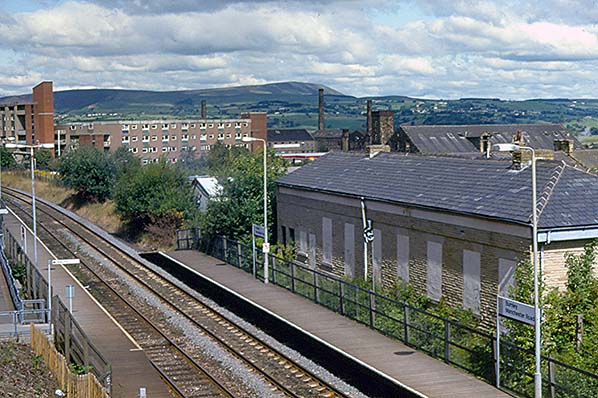
Burnley Manchester Road station, looking north in August 1993. The old station building’s masonry has been cleaned; some window spaces have been used to display local children’s poetry. The signage is now of the Network NorthWest style, incorporating the red rose symbol of Lancashire. In the background a few stone chimneystacks of former textile mills survive, competing for attention with the Trafalgar Street flats and Pendle Hill (1927ft) on the horizon.
Photo by Alan Young 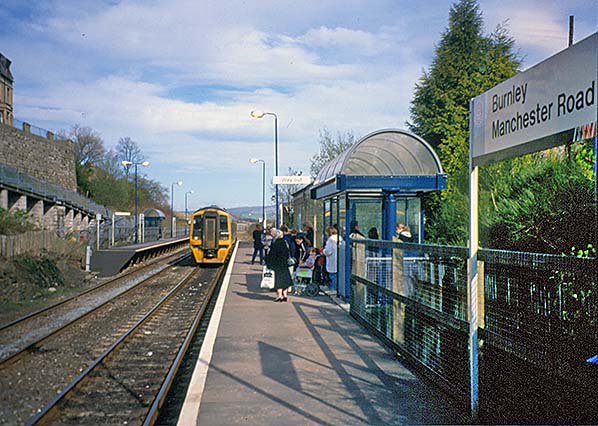 On 17 April 1998 a Class 158 DMU enters the up platform of Burnley Manchester Road station. The platform shelters installed in 1986 have now given way to a somewhat more attractive design which was also provided in the 1990s at some of the Preston-Blackburn-Colne stations. A BR Network NorthWest nameboard is in the foreground displaying the Lancashire red rose.
Photo by Alan Young 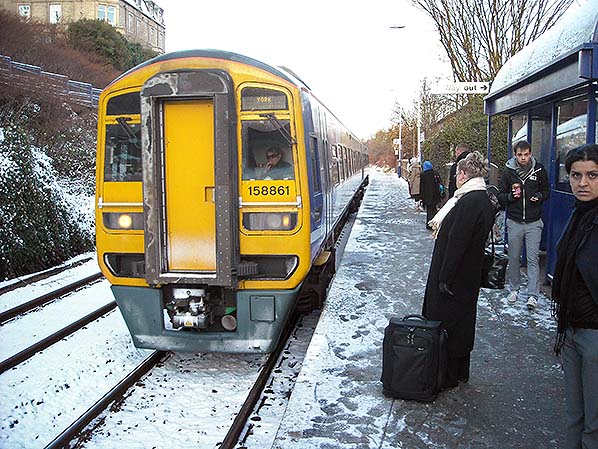
On 1 December 2010 Class 158 DMU No.158 861 has arrived at Burnley Manchester Road to uplift passengers bound for Yorkshire.
Photo
by Alan Young
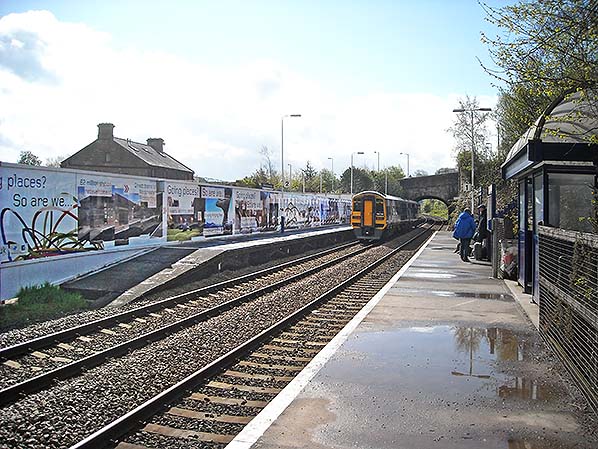 Burnley Manchester Road station looking south-east from platform 1 (down) on 16 May 2013. A Class 158 DMU bound for Halifax and beyond is at platform 2. The hoardings on platform 2 are advertising the investment in the route which will include the reinstatement of the Todmorden Curve – allowing direct travel by rail between Burnley Manchester Road, Todmorden,Rochdale and Manchester – and significant improvements to the station. In preparation for the construction of a new building at Manchester Road station the old one has been demolished. Northern Rail signage has been installed at the station (seen beside the ‘platform 2’ sign).
Photo by Alan Young 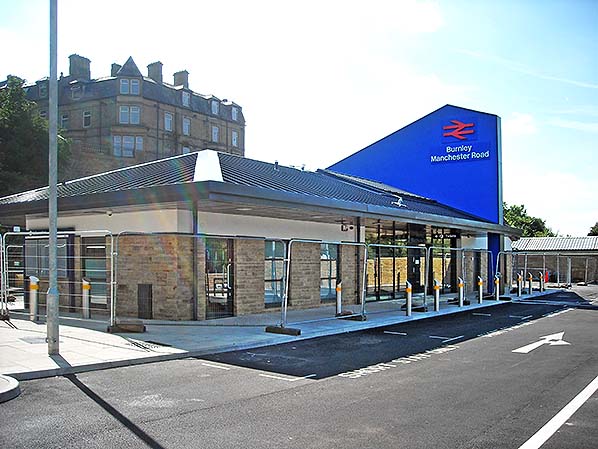
The new building at Burnley Manchester Road station on 20 June 2014, seen from the extended car park. It had been hoped that the new Blackburn-Burnley Manchester Road-Rochdale-Manchester service via the ‘Todmorden Curve’ would begin in May 2014 and that the facility seen here would be available, but the building would not be ready until November 2014 and the trains would not be introduced until May 2015. It will be seen that this structure is intended to bear a resemblance to the building it replaced: single-storey, stone-built and with a hipped roof. The tall blue wall carrying the station name is distinctive. The new building includes a booking office and vastly superior waiting accommodation.
Photo
by Alan Young
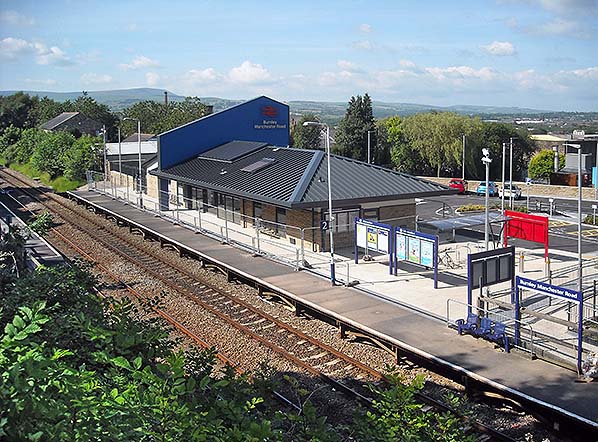
Burnley Manchester Road station on 20 June 2014. The station is undergoing a £2.3 million upgrade, the principal feature being the new building seen on the up platform (no.2). New signage has been installed and, in the background, part of the greatly expanded car park can be seen. The new building is not ready for use and is therefore fenced off from the platform. In the background the Trafalgar Street flats are no more, but Pendle Hill still dominates the horizon.
Photo by Alan Young 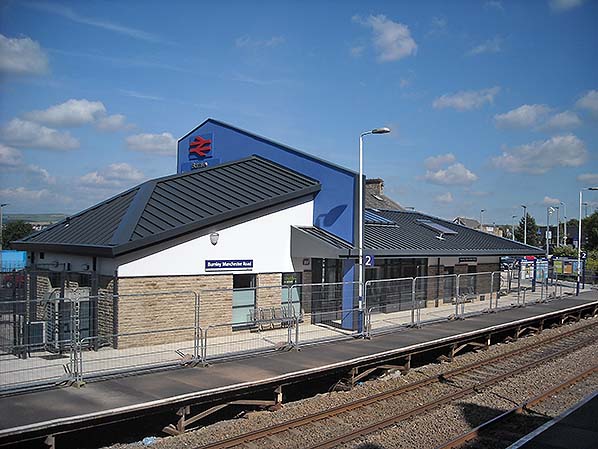 Burnley Manchester Road station, looking east on 20 June 2014. The smart new building contrasts with the somewhat basic design of the platform. The building is not yet in use and is fenced off Burnley Manchester Road station, looking east on 20 June 2014. The smart new building contrasts with the somewhat basic design of the platform. The building is not yet in use and is fenced offfrom the platform. Photo
by Alan Young
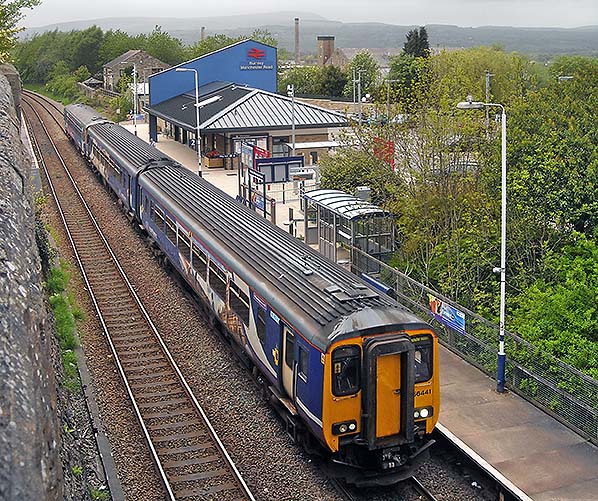 On 25 May 2015 Class 156 DMU No.156 441 is calling at Burnley Manchester Road. The new building is now in use, enabling the station to be staffed. In addition to the small open shelter on the platform there is heated waiting accommodation in the main building. The view is from the Manchester Road bridge.
Photo by Alan Young 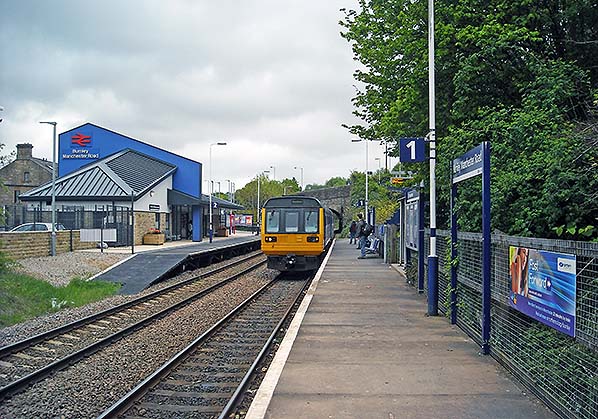
On 25 May 2015 Class 142 ‘Pacer’ DMU No.142 038 calls at Burnley Manchester Road en route to Blackburn. It is ironic that the long-awaited direct service to and from Manchester via the ‘Todmorden Curve’ is provided by the railway network’s least glamorous train! The station boasts a striking new building on the up platform, offering booking and waiting facilities, and an enlarged car park.
Photo
by Alan Young
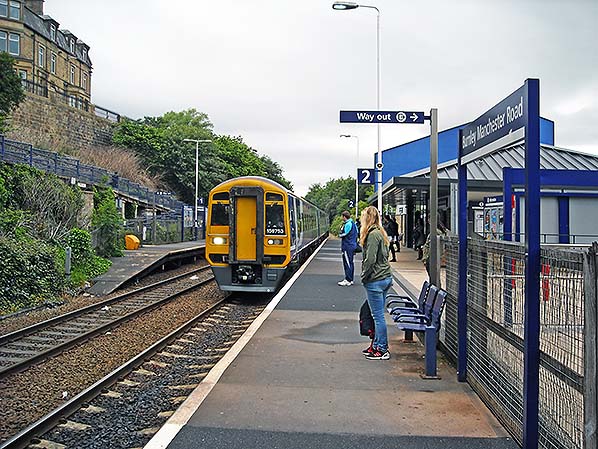
DMU Class 158 No.158 753 arrives at Burnley Manchester Road on 18 June 2016 on its way to York. The new main building is seen on the right, and in the foreground is a Northern Rail nameboard. Whereas this platform (No.2 / up) has vastly improved facilities for passengers the down platform has only a small waiting shelter. This perhaps reflects the trend for West Yorkshire towns to draw commuters from East Lancashire, rather than vice versa, so it makes sense to issue tickets and provide superior waiting accommodation on the Yorkshire-bound platform.
Photo by Alan Young Click on thumbnail to enlarge
|




 Home Page
Home Page